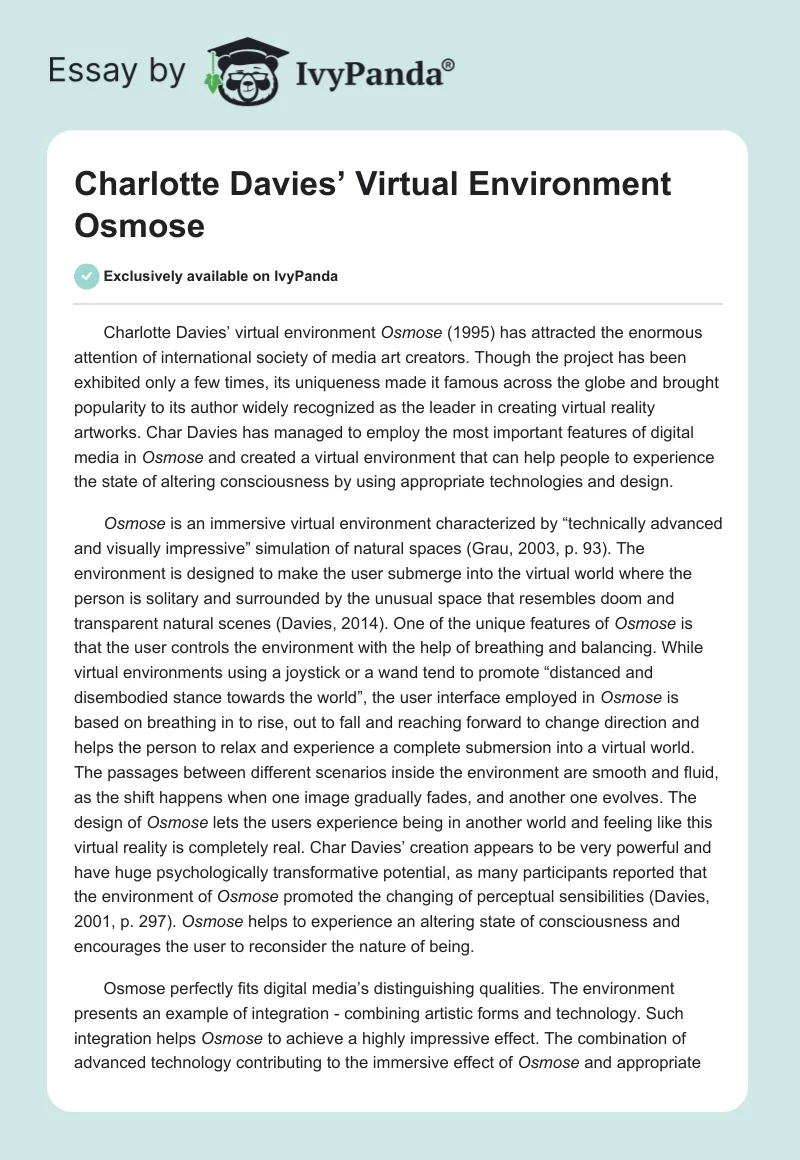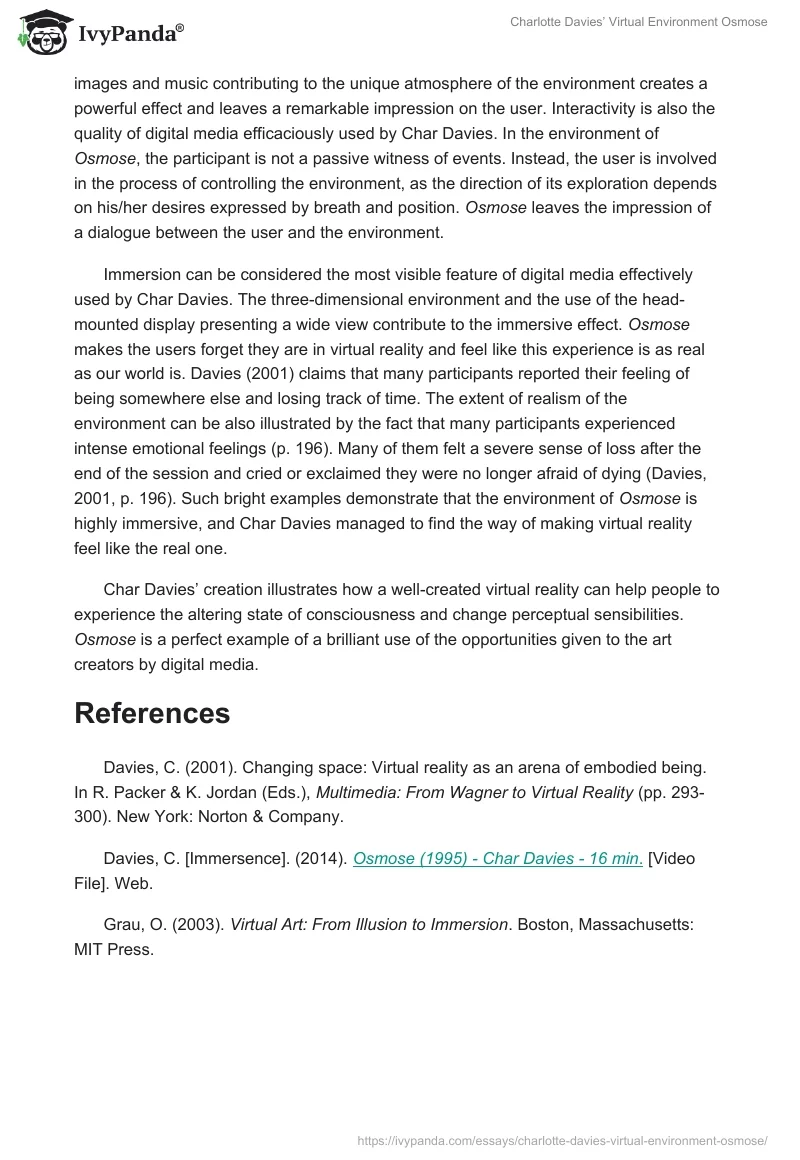Charlotte Davies’ virtual environment Osmose (1995) has attracted the enormous attention of international society of media art creators. Though the project has been exhibited only a few times, its uniqueness made it famous across the globe and brought popularity to its author widely recognized as the leader in creating virtual reality artworks. Char Davies has managed to employ the most important features of digital media in Osmose and created a virtual environment that can help people to experience the state of altering consciousness by using appropriate technologies and design.
Osmose is an immersive virtual environment characterized by “technically advanced and visually impressive” simulation of natural spaces (Grau, 2003, p. 93). The environment is designed to make the user submerge into the virtual world where the person is solitary and surrounded by the unusual space that resembles doom and transparent natural scenes (Davies, 2014). One of the unique features of Osmose is that the user controls the environment with the help of breathing and balancing. While virtual environments using a joystick or a wand tend to promote “distanced and disembodied stance towards the world”, the user interface employed in Osmose is based on breathing in to rise, out to fall and reaching forward to change direction and helps the person to relax and experience a complete submersion into a virtual world. The passages between different scenarios inside the environment are smooth and fluid, as the shift happens when one image gradually fades, and another one evolves. The design of Osmose lets the users experience being in another world and feeling like this virtual reality is completely real. Char Davies’ creation appears to be very powerful and have huge psychologically transformative potential, as many participants reported that the environment of Osmose promoted the changing of perceptual sensibilities (Davies, 2001, p. 297). Osmose helps to experience an altering state of consciousness and encourages the user to reconsider the nature of being.
Osmose perfectly fits digital media’s distinguishing qualities. The environment presents an example of integration – combining artistic forms and technology. Such integration helps Osmose to achieve a highly impressive effect. The combination of advanced technology contributing to the immersive effect of Osmose and appropriate images and music contributing to the unique atmosphere of the environment creates a powerful effect and leaves a remarkable impression on the user. Interactivity is also the quality of digital media efficaciously used by Char Davies. In the environment of Osmose, the participant is not a passive witness of events. Instead, the user is involved in the process of controlling the environment, as the direction of its exploration depends on his/her desires expressed by breath and position. Osmose leaves the impression of a dialogue between the user and the environment.
Immersion can be considered the most visible feature of digital media effectively used by Char Davies. The three-dimensional environment and the use of the head-mounted display presenting a wide view contribute to the immersive effect. Osmose makes the users forget they are in virtual reality and feel like this experience is as real as our world is. Davies (2001) claims that many participants reported their feeling of being somewhere else and losing track of time. The extent of realism of the environment can be also illustrated by the fact that many participants experienced intense emotional feelings (p. 196). Many of them felt a severe sense of loss after the end of the session and cried or exclaimed they were no longer afraid of dying (Davies, 2001, p. 196). Such bright examples demonstrate that the environment of Osmose is highly immersive, and Char Davies managed to find the way of making virtual reality feel like the real one.
Char Davies’ creation illustrates how a well-created virtual reality can help people to experience the altering state of consciousness and change perceptual sensibilities. Osmose is a perfect example of a brilliant use of the opportunities given to the art creators by digital media.
References
Davies, C. (2001). Changing space: Virtual reality as an arena of embodied being. In R. Packer & K. Jordan (Eds.), Multimedia: From Wagner to Virtual Reality (pp. 293-300). New York: Norton & Company.
Davies, C. [Immersence]. (2014).Osmose (1995) – Char Davies – 16 min. [Video File]. Web.
Grau, O. (2003). Virtual Art: From Illusion to Immersion. Boston, Massachusetts: MIT Press.


